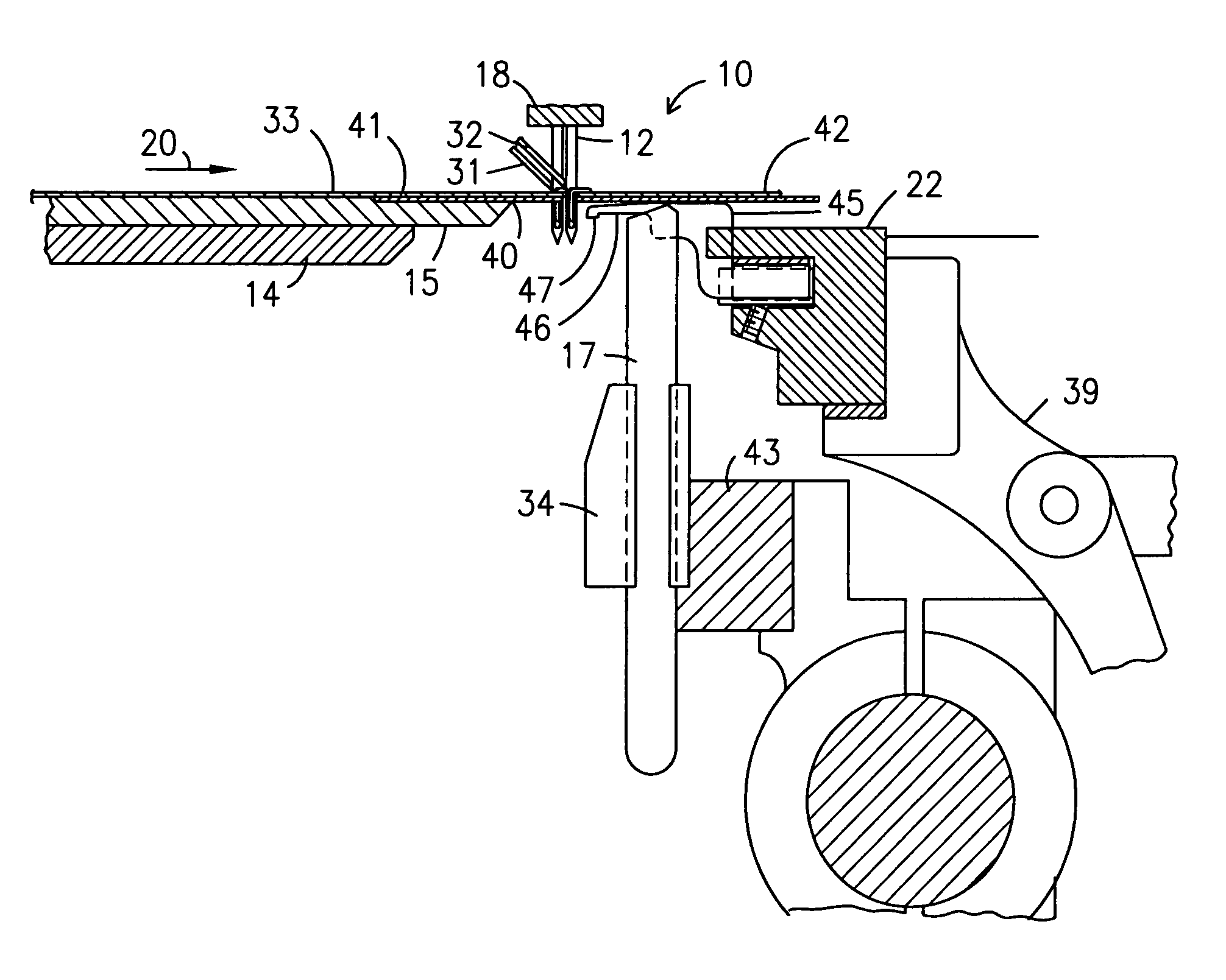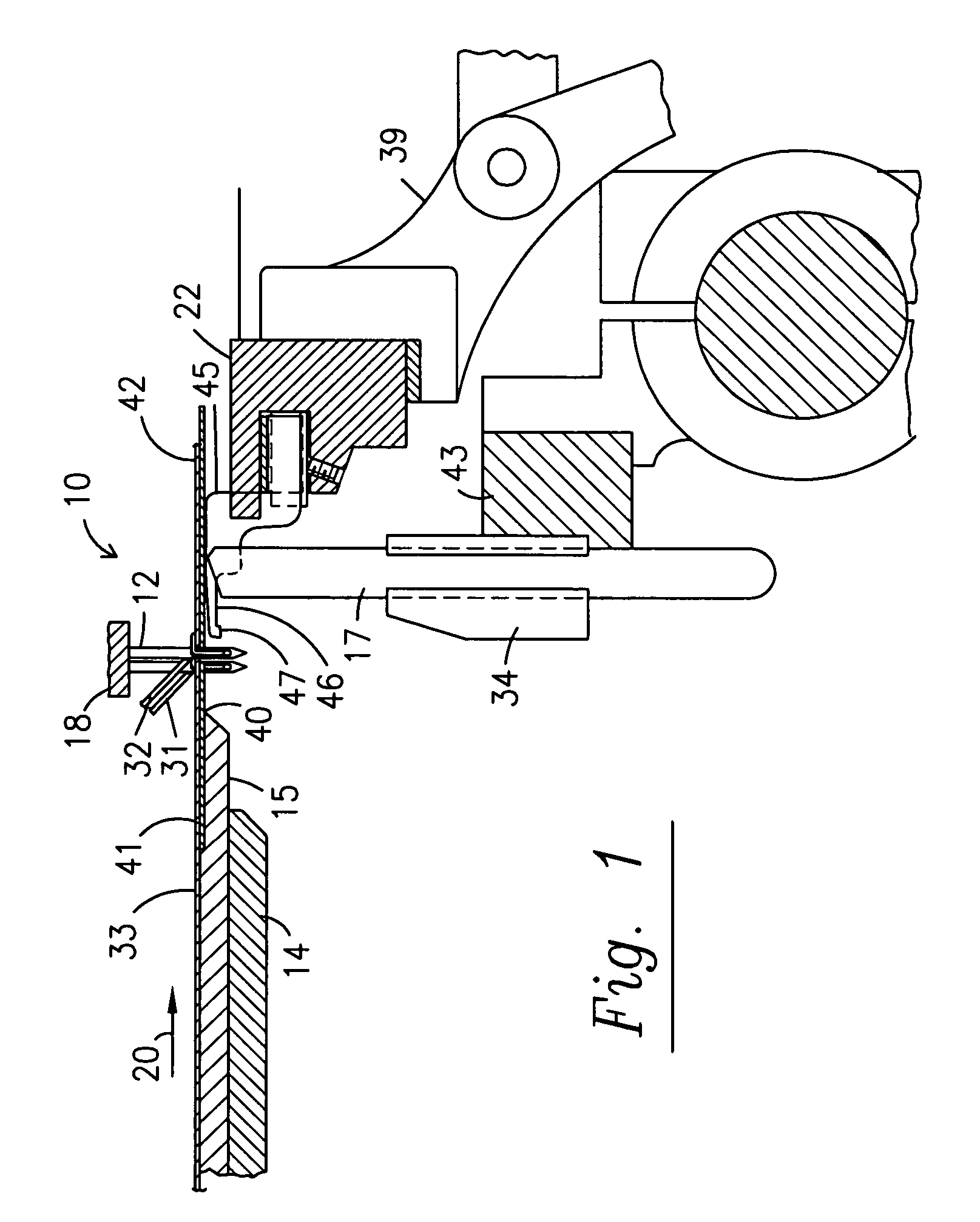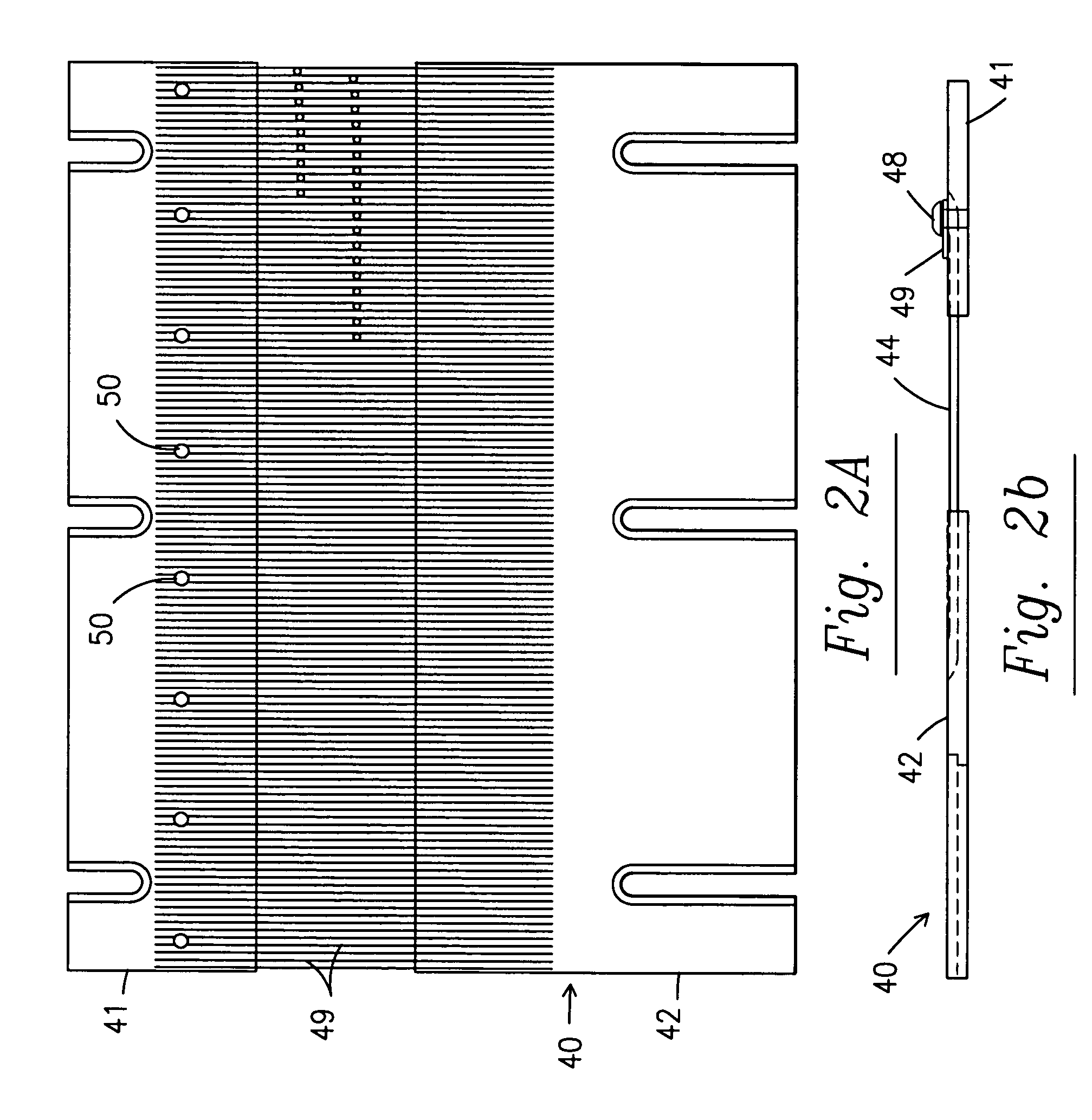Tufting machine and process for variable stitch rate tufting
a tufting machine and variable stitch technology, applied in the field of tufting machines, can solve the problems of not being able to provide for different length stitches within the same pattern without utilizing, and being difficult to change the number of stitches per inch being sewn by the tufting machine,
- Summary
- Abstract
- Description
- Claims
- Application Information
AI Technical Summary
Benefits of technology
Problems solved by technology
Method used
Image
Examples
Embodiment Construction
[0019]Turning first to FIG. 1, a representative cut pile tufting machine 10 with staggered needle bar 18 is shown. The staggered needle bar 18 supports a first row of uniformly spaced rear needles 12 and a second row of uniformly spaced front needles 11 offset midway between the rear needles 12, to provide a uniform narrow gauge staggered needle tufting machine 10. It will be understood that the invention may also be practiced with two independent needle bars, each supporting a row of needles, and each shift able to either place the needles on the front and rear needle bars directly in line or offset as desired. The needle bar 18 is vertically reciprocated by conventional means, not shown, to cause the front and rear needles 11, 12 to move between an upward position, not shown, above the base fabric 33 and a downward position so that the needles will carry front yarns 31 and rear yarns 32 through the base fabric 33 to form loops of tufting therein. The base fabric 33 is supported up...
PUM
 Login to View More
Login to View More Abstract
Description
Claims
Application Information
 Login to View More
Login to View More - R&D
- Intellectual Property
- Life Sciences
- Materials
- Tech Scout
- Unparalleled Data Quality
- Higher Quality Content
- 60% Fewer Hallucinations
Browse by: Latest US Patents, China's latest patents, Technical Efficacy Thesaurus, Application Domain, Technology Topic, Popular Technical Reports.
© 2025 PatSnap. All rights reserved.Legal|Privacy policy|Modern Slavery Act Transparency Statement|Sitemap|About US| Contact US: help@patsnap.com



